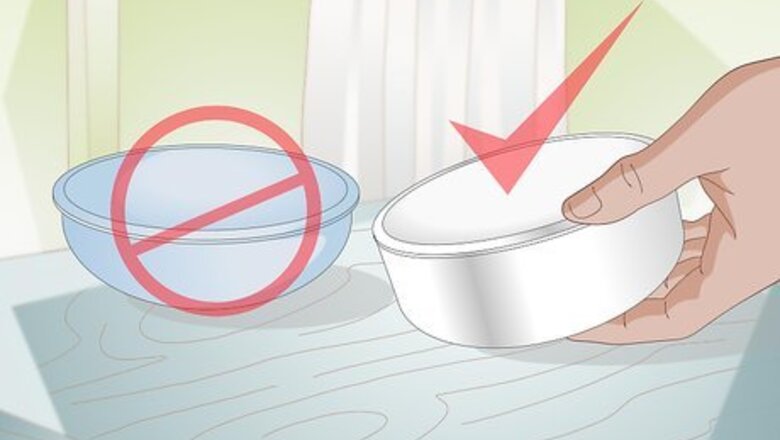
views
Using a Bowl
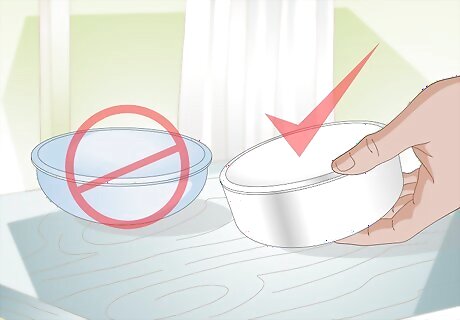
Avoid plastic bowls. Your rabbit's bowl should be made of ceramic or metal. Plastic bowls are easily scratched. Bacteria can then build up in the crevices and contaminate the water. Your rabbit may also pick up a plastic bowl and treat it as a toy. Heavy ceramic bowls are ideal for rabbits. Rabbit bowls typically hold about 550ml of water and about 5" across.
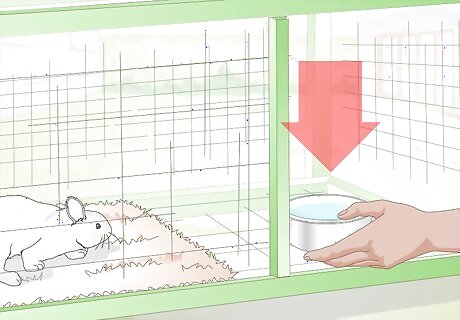
Place away from bedding. While bowls are the most natural way for your rabbit to drink water, they are more likely to be contaminated with beddings, litter, and food. The bowl should be placed away from any food and loose bedding. You may need to change the water more than once a day to keep it from becoming contaminated. If your rabbit tends to knock over the bowl, purchase a bowl that clips to the side of the cage. Consider having a water bottle in the cage as a backup in case the water bowl gets knocked over.
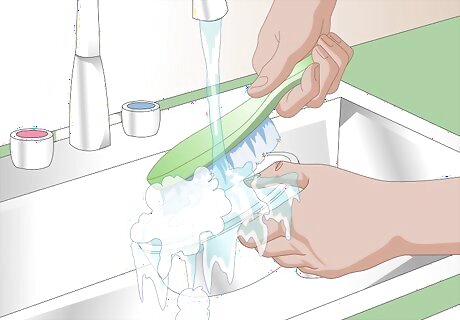
Clean the bowl daily. Wash the bowl with warm, soapy water, rinse, and refill with clean water. Your rabbit will not be interested in drinking stale or unclean water. Disinfect the bowl at least once a week. Mix 1 tablespoon of bleach with 1 cup of water to disinfect the bowl. Rinse the bowl thoroughly with clean water to remove any traces of bleach.
Selecting a Bottle
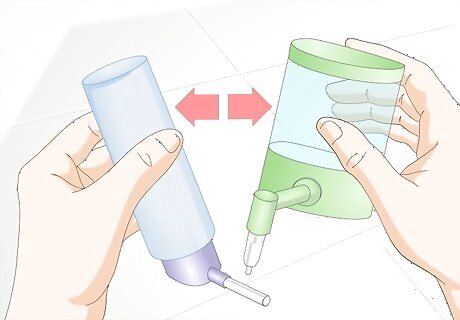
Choose between a classic or sippy spout. Classic water bottles have a metal tube with balls inside. The balls stay at the end of the tube until your rabbit licks the tube and causes the water to come down. These spouts are more likely to leak and your rabbit may be frustrated by the balls in the tube. A sippy spout has a wider spout and is quieter than a classic water bottle. If your rabbit will be staying in your room, a quieter sippy spout is best. Sippy spouts are more expensive but are easier to clean.
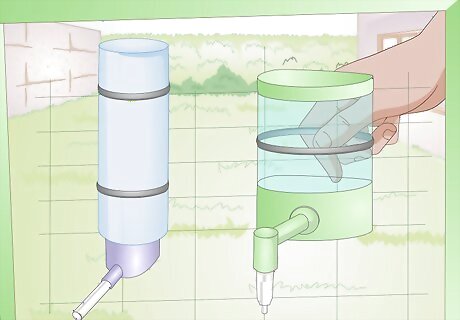
Attach the bottle. Your rabbit's bottle will come with the tools necessary to attach the bottle to the cage. Keep in mind that your rabbit may chew on the bottles because it is hanging in the cage. If you do not like the attachment that comes with your bottle, you can use the water bottle holders that cyclists use. If your rabbit is hesitant about using the bottle, put some molasses or sweet jam on the end of the tube to entice him.
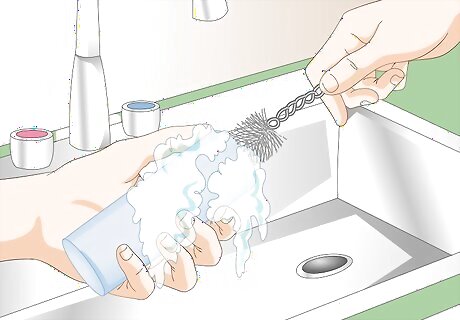
Clean bottles daily. Clean the bottle with hot, soapy water each day. Use a bottle brush for a better cleaning. You can also use sterilizing tablets that are made for cleaning baby bottles. To prevent algae from growing, place an opaque cover around the bottle.
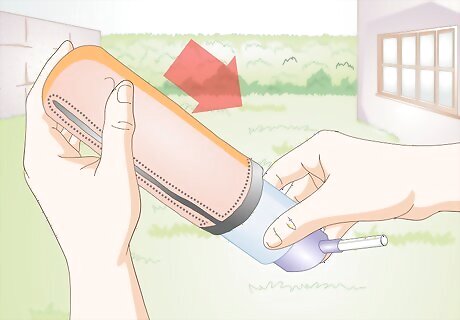
Prevent freezing in the winter. Water bottles may freeze in the winter. Use an insulated bottle cover to prevent this. These covers only protect the bottle, but not the spout. Check the spout to make sure that water is still coming out. If you cannot afford a bottle cover, place bubble wrap around the bottle and then place the bottle in a wooly sock. You may need to purchase a larger holder if you are using an insulated bottle.
Keeping Your Rabbit Hydrated
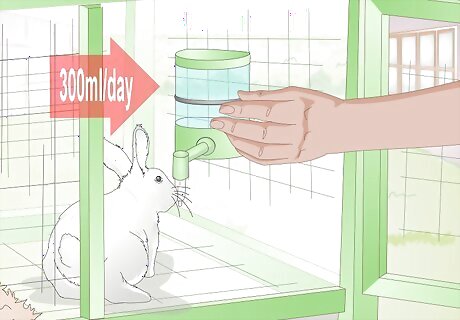
Provide 24/7 access to fresh water. The amount of water your rabbit drinks depends on his size, diet, and climate. A medium sized rabbit will drink 50-300ml of water per day. If your rabbit eats a lot of fresh foods and grass, they will not drink as much water because they are getting a lot of water through their diet. Your rabbit will also drink more water in hot weather. Give your rabbit the same quality of water that you would drink.
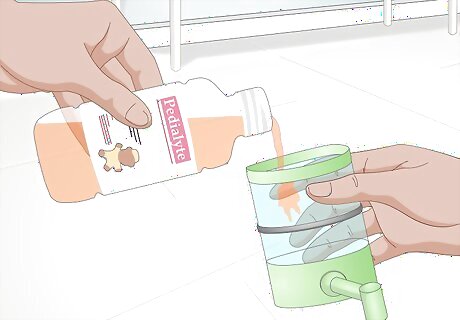
Add flavor to the water. If your rabbit is not drinking enough water, add a small amount of Pedialyte or unsweetened apple or carrot juice to the water. Do not give your rabbit any sugary drinks or Gatorade. If you add Pedialyte to the water, you will need to change the water more than once a day to prevent bacteria from developing. There is not a standard amount of flavor to add to the water. You may want to test the mixture yourself in a separate cup to see if you can taste a slight difference. Talk to your veterinarian before you add anything to your rabbit's water. These additions could have a negative effect on your rabbit's digestive system.
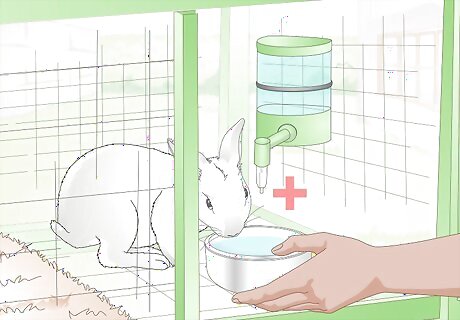
Give a bottle and bowl. If your rabbit has only been drinking out of either a bowl or bottle, give your rabbit another option. Your rabbit may be intrigued by this new source of water. It is also good to have a backup source of water in case a bowl gets knocked over or a water bottle is clogged or leaks too much. Check the water bottle tube each day to make sure that it is working properly.















Comments
0 comment